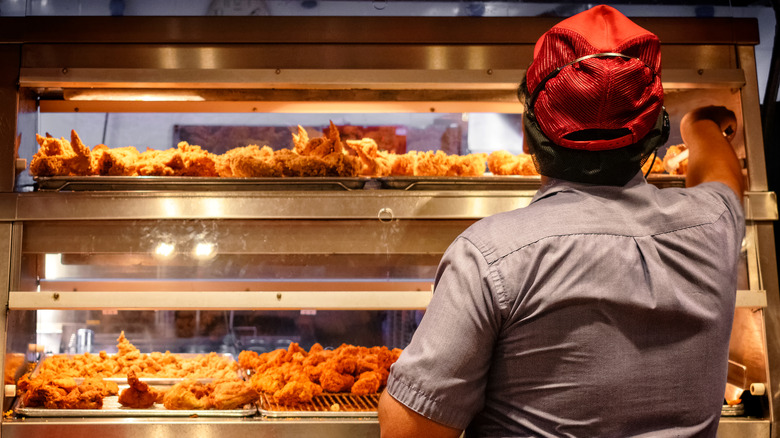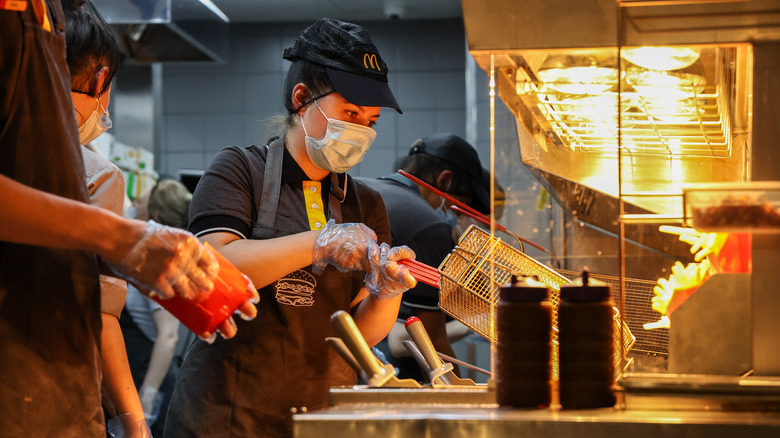How Fast Food Kitchens Are Evolving For The Modern World
For years, teenagers have gotten their first jobs, assembling hamburgers and taking customers' orders at their local fast-food joints. With fewer teens working (per CNBC) as aggravated workers leave to look for higher pay and better benefits (via Business Insider), fast food companies are having to find new ways to operate.
As of 2022, there were about 5 million people employed in the United States by the fast food industry, which is a 2.5% average increase between the years of 2017 and 2022, according to IBIS World. Despite this growth, fast food restaurants are facing a labor shortage. In a National Restaurant Association survey, 50% of restaurant operators said recruiting and retaining employees will be their number one challenge in 2022. Despite the problems with filling and keeping positions filled, the restaurant industry anticipates creating more positions: 200,000 each year between 2023 and 2030, according to the survey.
In response, the fast food industry has had to evolve and one area in particular is seeing changes: the kitchen. While they struggle to find workers, fast food companies are banking on new technology to speed up production and bridge this gap.
Adding technology to the kitchen
Just like in your home kitchen, devices in fast food restaurant kitchens are getting smarter, from the ovens to the fryers, reports QSR Magazine. Some of the changes include ovens with programmable cooking cycles and fryers that automatically filter oil. Some restaurants, according to Fast Casual, are using Bluetooth temperature monitoring systems that ensure food and equipment are operating the way they should. Career Builder reports that lighting systems are being installed that indicate how much time is left for a certain dish or technology that alerts workers when food is nearing its expiration date.
Another way fast food restaurants are expected to change is with robots helping out in the kitchen. QRS says that robots will not replace people (though some consumers prefer interacting with technology rather than people), but will work with them, to perform some of the more mundane jobs. One restaurant, CaliBurger, created a robot called Flippy which cooks the hamburger patties for the restaurant. The chain says Flippy decreases wait times, improves quality, and allows employees to interact more with customers.
Some of these advances may permanently change how fast food kitchens are run, while others may eventually lose steam and turn into passing fads. Still, you can likely expect more changes to fast food restaurants everywhere from their dining rooms and kitchens to their drive-thrus.

